The Dawn of Electric Trucking
The landscape of the trucking industry is undergoing a transformation, with electric Class 8 trucks emerging as a game-changer, the markets, the economics, the business are driving us to clean alternative energy. This report delves into the viability of this industry, examining its potential benefits and challenges for fleet managers, owners, and operators. We will compare electric trucks to their diesel counterparts, focusing on fuel savings, emission reductions, addressing the career outlook of jobs, and maintenance costs. Additionally, we will analyze CAPEX and OPEX comparisons to provide a comprehensive overview of the economic implications of this transition.
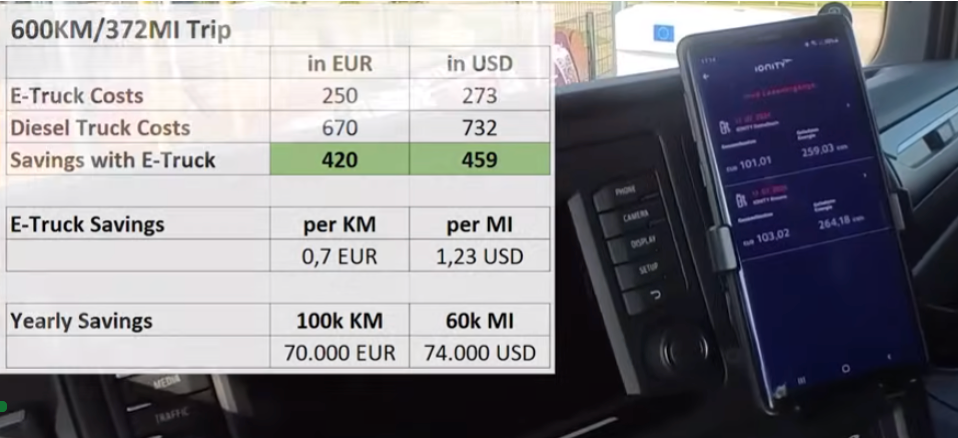
Fuel Savings
Electric trucks offer significant energy savings compared to diesel trucks. A study by Torque News found that a 200-mile trip in a diesel truck costs approximately $169.76 in fuel, while the same trip in an electric truck costs only $28. This represents a staggering 83% reduction in freight costs from just 1 single report of many fleet managers analysis[1]. These savings can significantly impact a trucking company's bottom line, and a significant reduction in freight costs, making electric trucks an attractive investment.

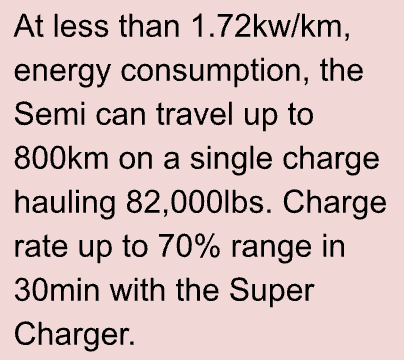
Emission Reductions
In Canada the biggest source of carbon emission besides oil and gas production is the transportation sector, which generates 28% of all GHG emissions. [2] Medium and Class 8 HD trucks are responsible for 37% of those emissions. By electrifying the trucking industry can propel Canada to meet emission reduction targets. Think of this for a minute, when the foot is off the throttle for whatever reason, energy stops flowing, no more wasted fuel idling, that energy is now saved moving the freight! Braking regeneration is a significant savings as well.
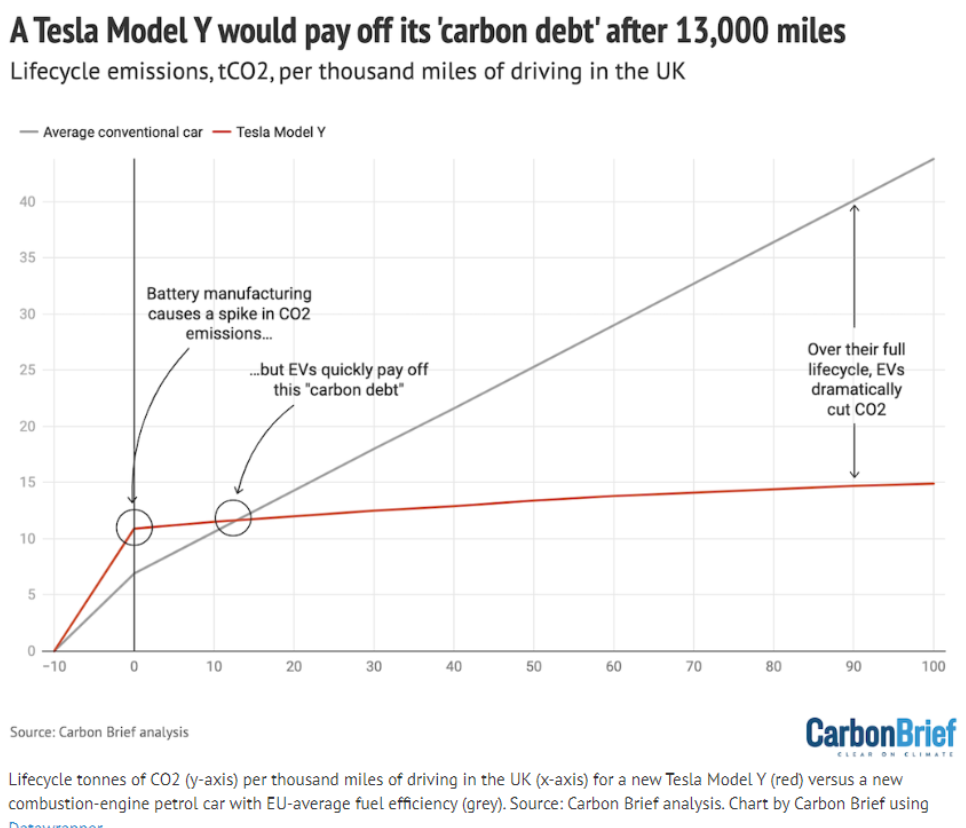
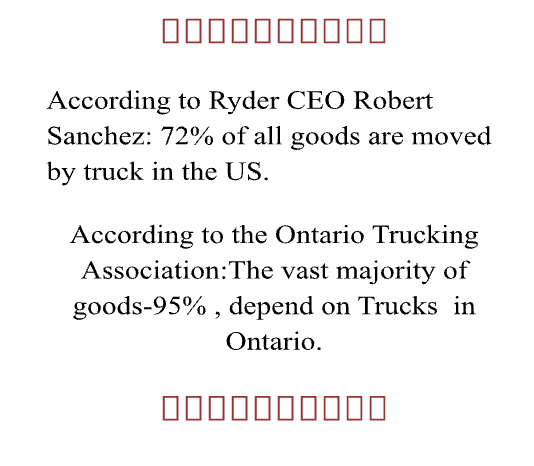
Maintenance Costs
Electric trucks have fewer moving parts than diesel trucks over 50% less according to SAE, resulting in lower maintenance and repair costs. Studies have shown that electric trucks can reduce maintenance costs by 30-40% compared to diesel trucks[3]. Significant savings for fleet operators over the lifetime of the vehicle; regenerative braking systems extend life of brake pads significantly complete with emersion heaters. Advancements in battery technology have already been introduced in markets today, with Canadian universities such as the Jeffery Dahn research group registering the million mile battery, Canadian battery scientist Toby Bond: 8M kms & 54yrs, and other advancements- putting an end to the myth of EV batteries.
CAPEX and OPEX Comparisons
While the initial purchase price of an electric truck is typically higher than a diesel truck, the Total Cost of Ownership (TCO) over the vehicle's lifetime can be significantly lower. A study by Roush Industries found that the payback period for electric trucks can be as short as three years, with some models achieving TCO parity even sooner[4]. This is due to lower fuel and maintenance costs, as well as government incentives such as tax credits of usd$40k.
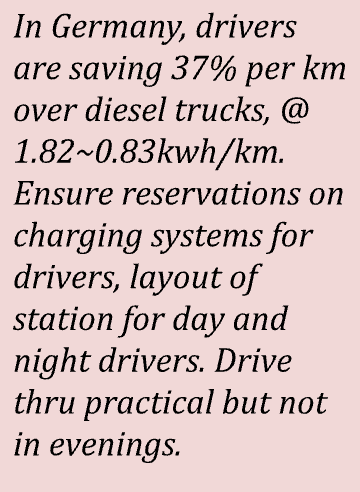
Charging and Infrastructure
This charging infrastructure is the crucial bottleneck, one that Canadian enterprise needs to focus on. Especially for this initial phase, the manufacturers demand government support, yet no one is looking into the major freight corridors of Ontario and Canada.
For Ontario, Montreal to Toronto, Hamilton, are just a beginning, Sarnia Windsor to Montreal is the most significant volume. During this phase, the utilisation rate will still be low and the deployment will be financially unattractive and risky for private investors. Responsibility for coordinating the deployment of the charging infrastructure should also lie with the Federal & Provincial governments.
Electrical infrastructure may be limited at the yard base due to several reasons; however alternative energy sources will play a decisive roll. The megawatt charging system (MCS) is the key to long haul capabilities of battery-powered trucks. With this, charging capacities of 1 MW and more are possible. Initially, charging power of between 800 kW and 1,200 kW is expected, however with battery and technology advancements, European charging stations and Truck fleets are managing with just 400kw EVCS units.
The business case for truck charging infrastructure is principally considered positive. Since the majority of trucks travel on repetitive routes, the demand is easier to calculate and localise than for passenger cars. This is also potentially associated with a higher utilisation of the charging infrastructure.
Tobias Wagner AKA the Elektrotrucker youtube channel discusses an app[5] he's creating specifically to help electric truck drivers. Its features include:
Interactive Map: Displays charging locations visually.
Real-Time Charging Status: Shows charging point availability using color codes (green for multiple available, yellow for limited, red for none) and provides live data, including how long vehicles have been charging.
Charging Point Details: Displays the operator for each charging point.
Travel Information: Calculates distance and estimated travel time to charging points, considering truck speed limit.
Filtering: Allows users to filter charging locations, for example, by suitability for 45-minute stops or overnight stays.
Navigation Integration: Lets users start navigation to a chosen charging point using external apps like Google Maps or TomTom.
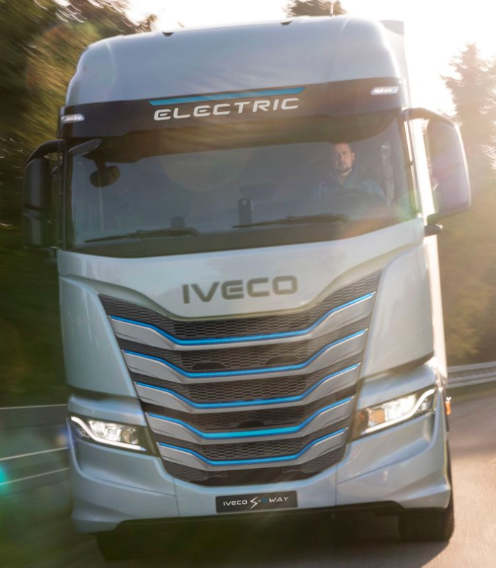
Conclusion
The emerging electric Class 8 truck industry offers a promising alternative to traditional diesel trucks. With significant savings, zero tailpipe emissions, and lower maintenance costs, e-trucks are viable option for fleet managers, owners, and operators looking to reduce their environmental impact and improve their bottom line.
This emerging sector can reduce noise pollution in urban areas, not to mention the highways, save significant money on noise reduction strategies on municipal planning and budgetary strategies.
With that reduction in noise, it will be possible to develop housing communities closer to city centers along highways and major routes, or mitigation of truck traffic can be reduced.
No more acoustical amplification through narrow corridors of buildings or main streets, within older established communities[6]. The electric transport truck and its counterparts will be easier and more comfortable to operate, safer environment- just roll the window down to hear outside- relaxing, thus increasing the attractiveness of the truck-driving profession.
According to Statistics Canada Q2 2024 there are over 15000 job openings for truck drivers. Assumptions of a shortfall of 55,000 by 2035. Electric semi-trucks will slow and possibly reverse that trend. The fuel efficiency and reduced operating costs of electric semi-trucks will put downward pressure on the consumer price indexes since transportation costs can represent as much as 10% of the price of consumer goods[8].
E-Trucks, reportedly will have improved torque and acceleration, so they’ll keep better pace with personal vehicles along the highways and especially on hills/ ramps. This will reduce traffic backups and make the highways safer overall. Many municipalities prohibit diesel truck operations at night, including loading and unloading, because of engine noise.
With the quieter electric semi-trucks, those noise restrictions won’t be an issue and truck transportation will become a more efficient delivery option. With these more flexible delivery and pickup options, retailers will be able to minimize inventories, to an extent, operating more efficiently to improve profits or allow for price discounts all.
Given the massive amounts of energy electric long haul semi-trucks can store (600~950kWh), in the event of a disaster with power outages, trucks could band together to create micro grids to power hospitals, communication centers, and other essential services through internal V2G capabilities and a simple extension cord.
Each individual truck saves 4L/hr idling, that idling can be a plethora of reasons from heating the cab overnight(1 gallon/hr), to traffic congestion, running into the store for goods, warming up and airing up the systems, lifting the foot off the pedal stops the energy depletion from the battery.
The new electric truck designs will have a lower center of gravity, resulting in fewer rollovers, this means improved safety and fewer accident-related road closures.
Finally, no urea and deionised DEF fluids are required; saving costs and potential downtime profit loss’s when temperatures drop to minus double digits due to system freezing.
While challenges remain, such as the higher initial purchase price and the need for a hybrid charging infrastructure + correct station layout to accommodate, the long-term benefits of electric trucks make them a compelling investment in the future of the Canadian trucking industry and interprovincial goods movement.
A Canadian approach as Scott Jansen, electrical engineer and power grid expert has stated: By electrification of transportation converting transportation from fossil fuels to electricity increases the efficiency by 300% so you get about a 30% efficiency on fossil fuels vs 90% on battery electric vehicles so if we Electrify everything we just we don't need to produce as much energy to meet the same demand.
The end of the Jake Brake!
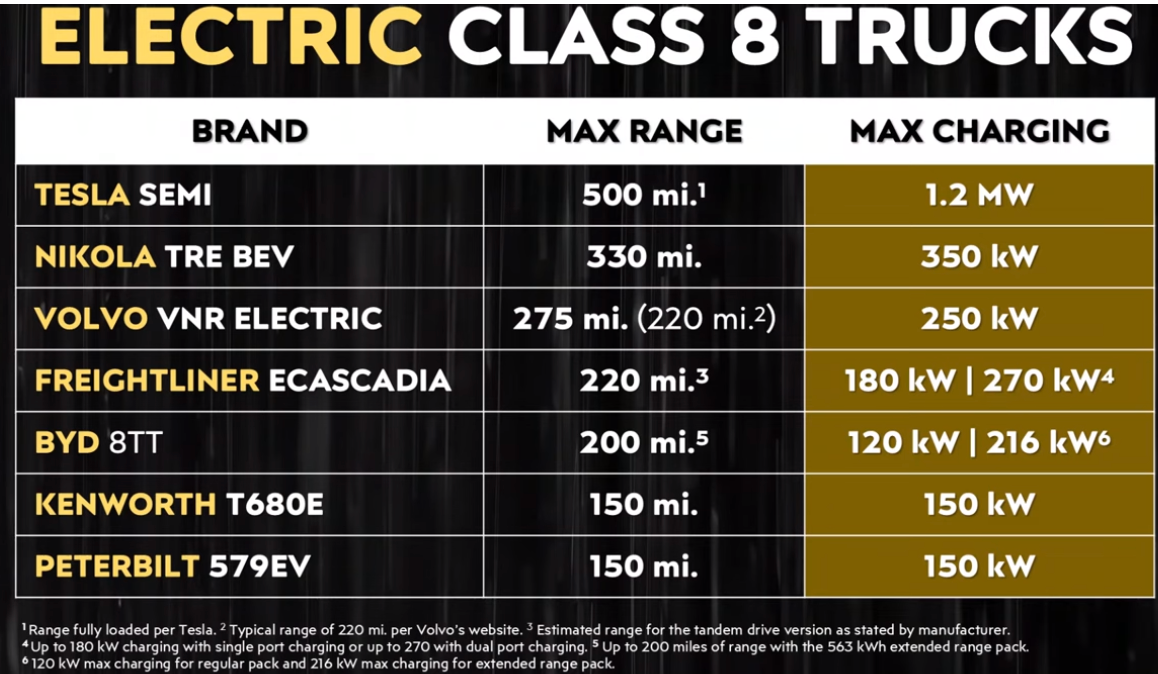
References
[1]. https://www.torquenews.com/14335/staggering-economics-tesla-semi
[2]. https://www.conferenceboard.ca/hcp/greenhouse-gas-emissions-aspx/ Transport Canada: https://tc.canada.ca/en/corporate-services/transparency/corporate-management-reporting/transportation-canada-annual-reports/2021/greenhouse-gas-emissions
[3]. Roush Class 7 & 8 study for Env Defense Dept. & Ford: https://blogs.edf.org/climate411/wp-content/blogs.dir/7/files/Roush-Class-7-and-Class-8-Tractor%E2%80%93Trailer-Electrification-for-MYs-2030-and-2032.pdf Regenerative Breaking benefits: https://uk.mer.eco/news/what-is-regenerative-braking-in-commercialelectricvehicles/#:~:text=This%20reduces%20risk%20of%20brake,even%20better%20system%20%E2%80%93%20regenerative%20braking
[4]. https://blogs.edf.org/climate411/wp-content/blogs.dir/7/files/Roush-Class-7-and-Class-8-Tractor%E2%80%93Trailer-Electrification-for-MYs-2030-and-2032.pdf HD Fleet magazine: https://www.truckinginfo.com/10224083/the-economics-of-transport-electrification
[5]. https://www.youtube.com/watch?v=FVcJa44xbto
[6]. Noise reduction: within lower speeds the wind noise and tire noise is not the main contributor, the engine noise of a diesel is predominant. https://press.mantruckandbus.com/corporate/man-etrucks-only-about-half-as-loud-as-comparable-diesel-trucks/#:~:text= https://cyberswitching.com/impact-electric-cars-noise-pollution/#:~:text=Noise%20Reduction%20in%20Electric%20Vehicles,-One%20of%20the&The%20absence%20of%20engine%20noise,a%20more%20serene%20urban%20environment
[7]. Stats Can: https://www.statcan.gc.ca/o1/en/plus/7190-fewer-job-vacancies-truckers-demand-remains-amid-supply-chain-challenges truck news: https://www.trucknews.com/transportation/truck-driver-vacancies-drop-36-in-q2-2024-as-non-driving-roles-lag-behind/1003191802/
[9]. Scott Jansen's point that electrifying transportation dramatically increases energy efficiency at the point of use, leading to a need for less primary energy overall to achieve the same amount of transportation, is generally accurate and supported by energy analyses, even when accounting for grid and charging losses. However, his specific efficiency percentages (especially the 85-90% for BEVs) likely refer to different stages of the energy conversion process than typically used in full Well-to-Wheels comparisons. The points about transmission, conversion, and charging losses are correct and represent real-world factors that reduce the overall efficiency from power plant to vehicle movement. https://www.youtube.com/watch?v=yM1YR7kpjOo

Author Bio
Marvin Meyer - Co-founder
With over 40 years in industrial operations and a passion for renewable energy, Marvin has been involved in everything from automotive industry maintenance to building mission-critical data centres.
He brings hands-on experience and deep knowledge of energy systems that help make our charging stations both robust and efficient.
Connect with me on my LinkedIn profile.




